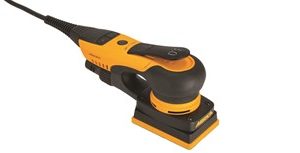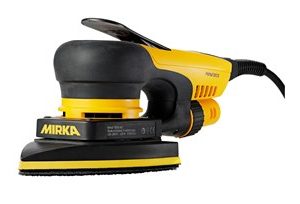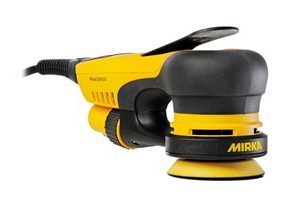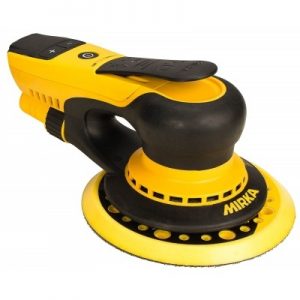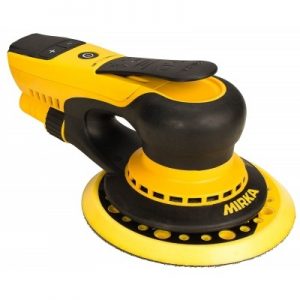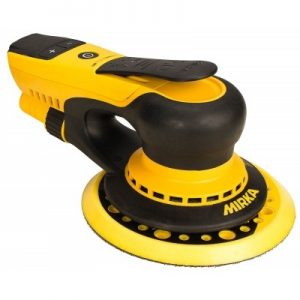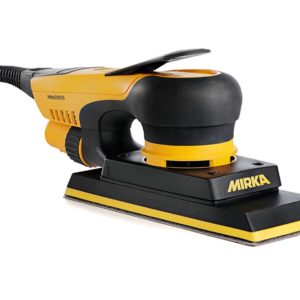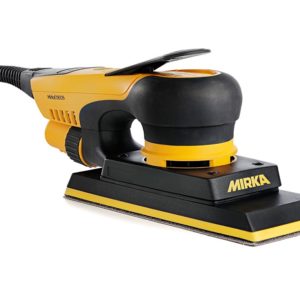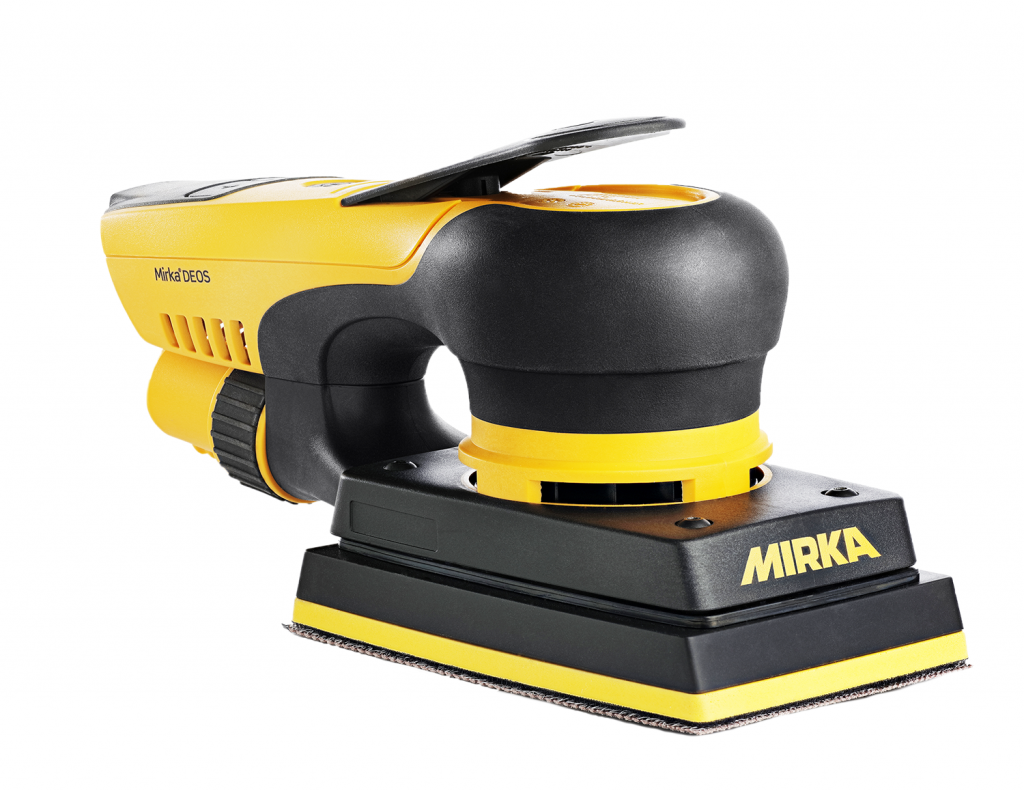How Do Random Orbital Sanders Work?
The random orbital sander is typically built for one-handed use and has a palm grip. Using an abrasive, round pad, it moves in circles and can sand in any direction needed. It offers exceptional usability for many general projects, whether fine finishing or rough sanding. Some random orbit sanders also feature pressure-sensitive adhesive (PSA) abrasive discs, which are often available at lower price points. Other models employ reusable Velcro discs for easy use and pad changes as needed.
Orbital sanders are light, quiet and maneuverable for operators. While they are not heavy-duty enough to remove heavy stock materials, they can handle many other tasks, such as sharp edges removal, smooth wood sanding and paint or varnish sanding. These machines deliver constant speed for smooth, efficient sanding power.
For precision work or tight corner sanding, you can also use specialized random orbital sanders for the job.
When to Use a Random Orbital Sander vs. Other Sander Types
If you’re unsure about when to use random orbital sanders for a job, National Abrasives, Inc. can provide some additional insight. Keep a few main distinctions in mind to choose the right tool for your project needs.
Random Orbital Sanders vs. Dual-Action Sanders
Electric random orbital sanders use rotational momentum, but dual-action sanders use forced motion. While both combine rotary and orbital motion, dual-action sanders can damage the surface if used by a beginner. They offer a steadier sanding pattern but can also create more heat than random orbital sanders. As a result, random orbit sanders are better for general projects and beginner users.
Random Orbital Sanders vs. Palm Sanders
The palm sander is another common type of orbital sander you might want to compare for a job. Palm sanders use small circular motions and are ideal for finishing and touch-ups, but they don’t work as well for heavier-duty projects. A finishing sander can use orbital motion, so either type could work for light-duty tasks. You’ll want to consider the operator’s level of experience, the specific surface type and the smoothness required after sanding.
What to Consider When Buying a Random Orbital Sander
When you need to purchase a random orbital sander, pay attention to these key features:
- Sander speed: Some random orbit sanders can operate at 3,000 to 4,500 orbits a minute, while others can deliver up to 10,000 orbits a minute. Shorter strokes create glossier surfaces, so consider what result you need for your project.
- Configurations: Before making a purchase, test how the sander design and configuration feel in your hand. You may want a sander that offers flexibility to sand upside down if needed.
- Motor power: Your sander’s motor power can range depending on the precision work needed and the surface material you’re working with, so note your options.
- Sanding belt size: Typically, you’ll want a belt of 3 inches by 18 inches, 3 inches by 21 inches, or 4 inches by 24 inches for general, routine sanding jobs.
- Sander size: Depending on your project type, you’ll want different sizes for your sander. More precision woodworking may require 6-inch electric sanders, while a DIY project will be best with a 5-inch sander. For tighter spaces, you could also select a 3-inch sander.
Find a Mirka Electric Orbital Sander From National Abrasives, Inc.
When choosing a sander that can deliver optimal performance for your projects, turn to National Abrasives, Inc. for Mirka equipment. Mirka is an industry leader offering high-performance, reliable sanding abrasives technology for a range of applications, and we’re pleased to provide colthis equipment for our clients’ needs.
You can trust us to help you find the best solutions for your work and unique specifications. At National Abrasives, Inc., we prioritize competitive pricing, fast shipping and outstanding customer service to help equip you for the job.
Explore our product selections and order your sander online today.

